American Herring Gull (photo by Arlene Koziol)
Gulls are a group of birds that even good birders have a hard time telling apart, let alone someone new to the hobby. If I had a dollar for every time someone I know is an excellent birder said something along the lines of “UGH I’m terrible with gulls!”… I’d buy myself a guide book so I could get better at them too!
This group of noisy, rambunctious birds are often called “seagulls” though to be correct, it’s just “gulls.” But, from childhood “Seagulls” is how we learn to talk about them, so it’s more of a term of endearment, right? There are a number of gull species reported in southern Wisconsin, but the two most common are the ones we’ll focus on in Who’s That Singing? today: the Ring-billed Gull and the American Herring Gull.
An American Herring Gull surrounded by Ring-billed Gulls (Photo by Andy Reago & Chrissy McClarren)
First, their appearances:
These two species are similar in a lot of ways, with some key visual differences to watch for, if you can. They’re similar in coloration: white heads, chests, and bellies, with gray backs and wings with black on the wing tips. But the Ring-billed Gull has yellow legs, whereas the Herring Gull has pinkish legs. The Ring-billed Gull is smaller (crow-sized, which is still pretty hefty!) than the Herring Gull (between a crow and a goose). And maybe most importantly, the Ring-billed Gull has guess what on it’s bill: yes! a dark band that circles the beak, giving it its name.
Ring-billed Gull (photo by Mick Thompson). Note the yellow legs and ring on the bill.
American Herring Gull (photo by Holger Schramm FCC). Note the pink legs and no ring on the bill.
Next, their habitats:
Ring-billed Gulls are common in areas where people are: beaches, parking lots, fields, and garbage dumps — often in the hundreds! They eat pretty much whatever they can: garbage, fish, worms, the stray and abandoned French fry. Herring Gulls are typically found closer to large bodies of water. They’re a bit more selective with their eating, preferring water-loving prey like fish and mussels, as well as worms and insects in plowed fields.
Ring-billed Gull (photo by Mick Thompson)
And finally, their noises:
Their noises are both squeaky and squawky, making only calls (not songs). They make flight calls (noises while flying), alarm calls (warnings or alerts). They are often heard together because gulls often group up in large, mixed flocks.
Their noises are so similar that for the purpose of this article, I’m grouping them together. If you hear the noises like the ones in the clips below, know you’re hearing the gulls!
And what time of year?
Both species of gulls are considered short- to medium-distance migrants. Herring Gulls are found year round along Lake Michigan and Lake Superior, but typically nesting further north in Canada in summer and wintering in southern US or along the west coast. Ring-billed Gulls nest throughout Wisconsin and other northern states, then migrate to the southern states, Mexico or Caribbean for winter months.
eBird shows that Ring-billed Gulls are present in southern Wisconsin (specifically, Dane County) throughout the year, but in fewer numbers in January and February. eBird also shows Herring Gulls in Dane County throughout the year but with most of them present in March, November, and December. And indeed, there have been 77 Christmas Bird Counts in Madison since the early 1900’s when birders saw or heard Herring Gulls, and 63 Christmas Bird Counts in the same timeperiod when birders saw Ring-billed Gulls.
Calls: Ring-billed Gull
Calls: American Herring Gull
So next time you’re near water, or by the dump, or in a parking lot, notice the “seagulls” and see if you can tell which they are: Ring-billed or Herring? You’ll have a leg up on a lot of birders!
Who’s That Singing? is a series designed for Birding by Ear class participants but available to anyone interested in learning more!
Written by Brenna Marsicek, Southern Wisconsin Bird Alliance director of outreach


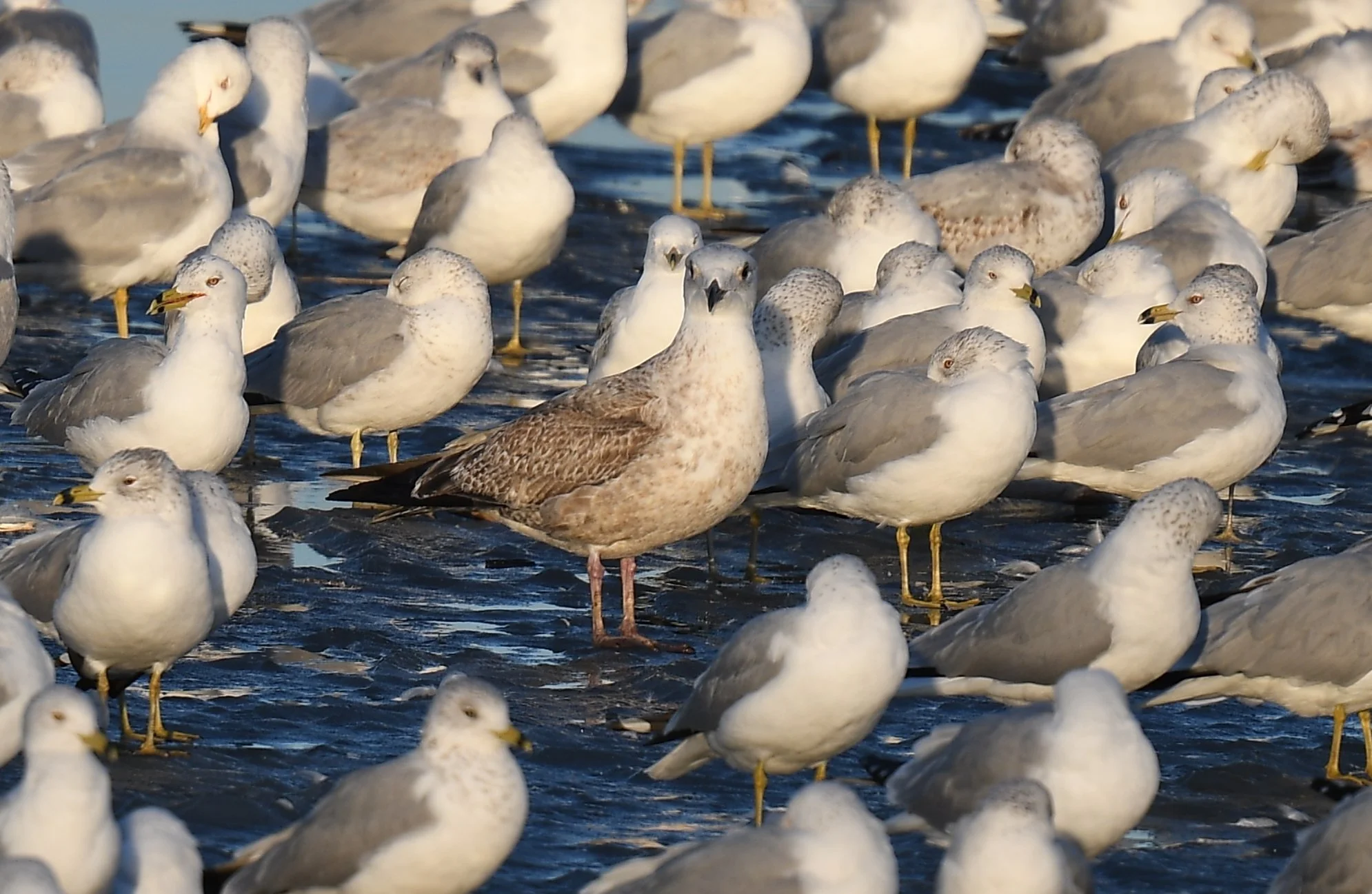
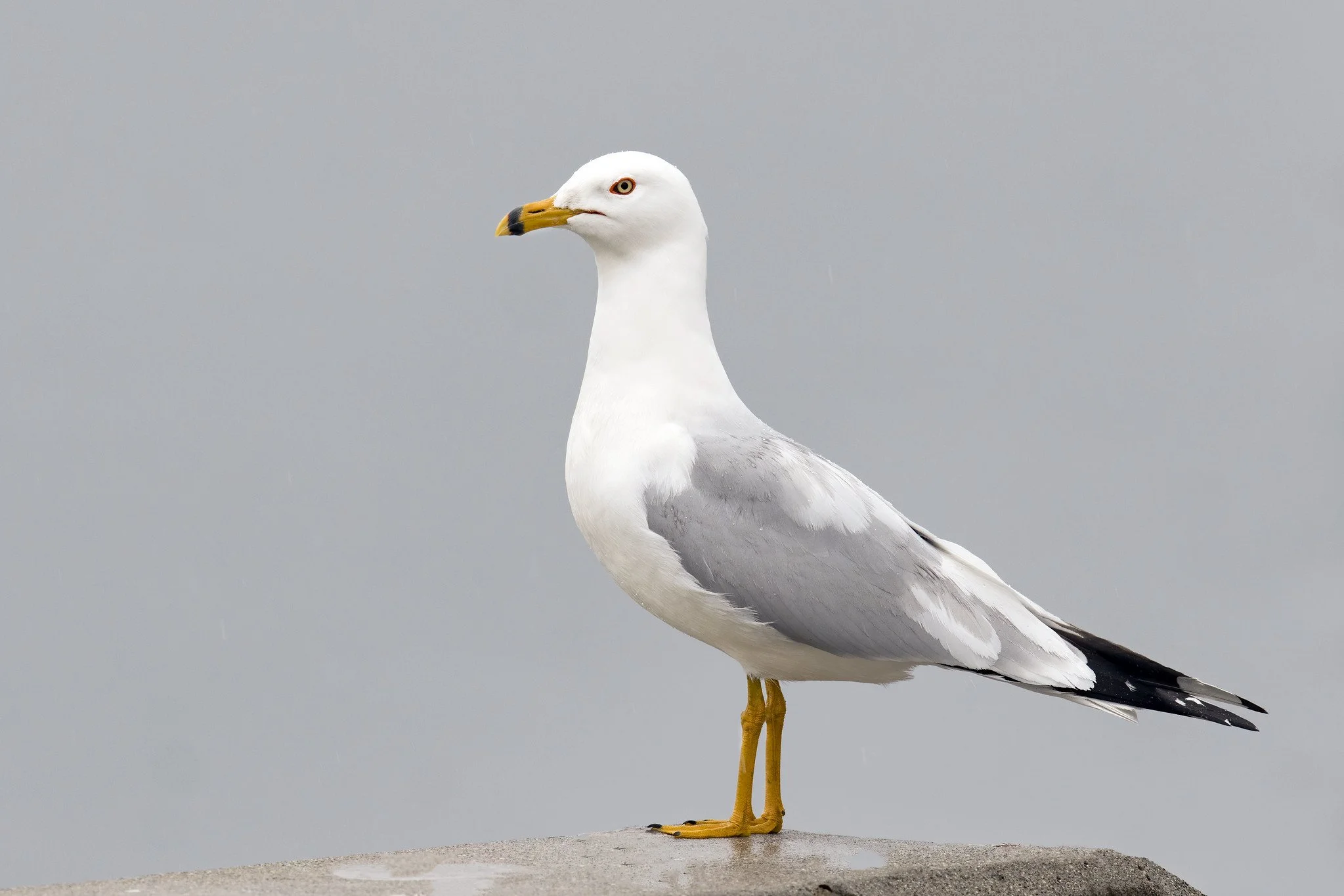



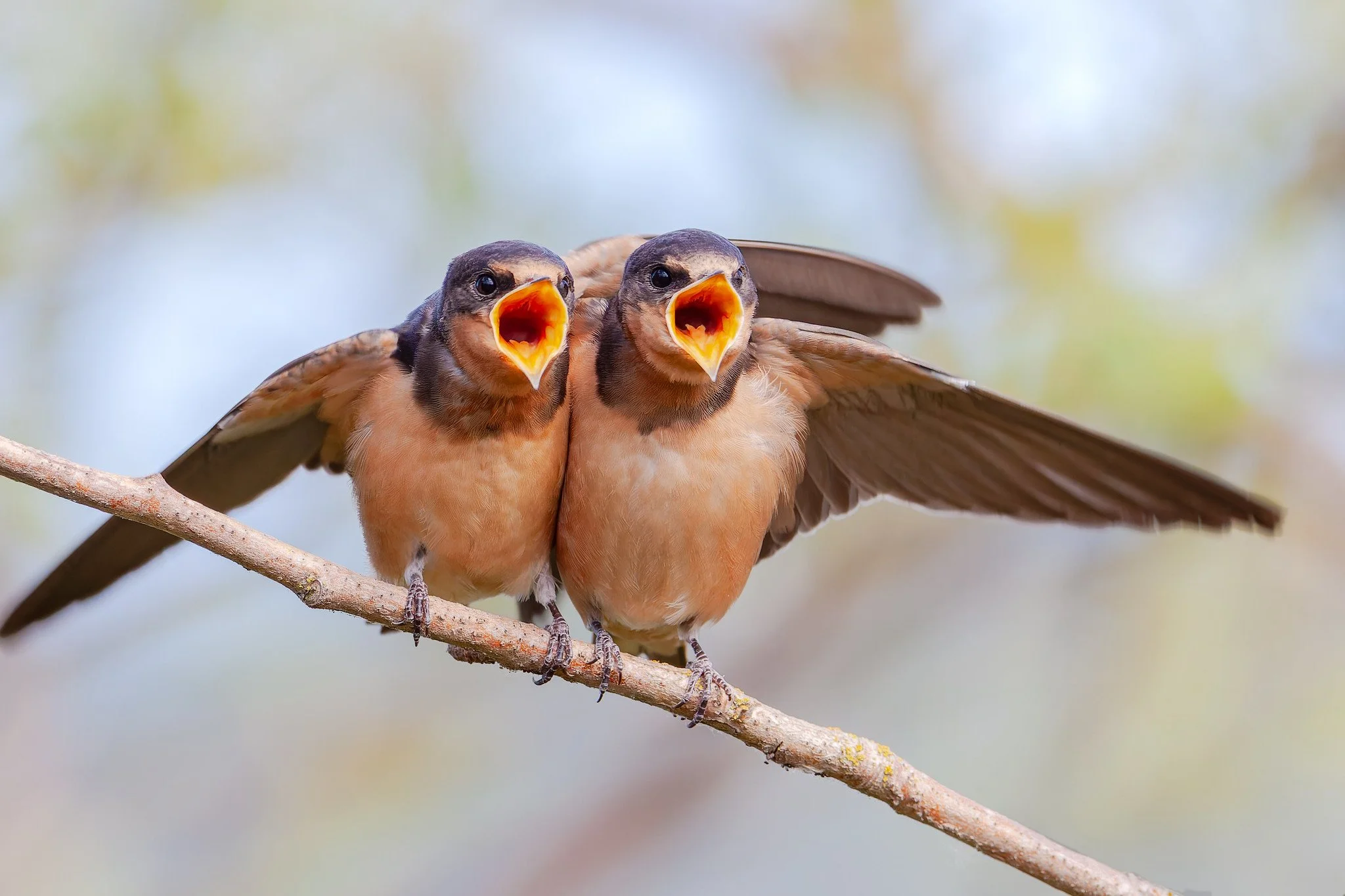
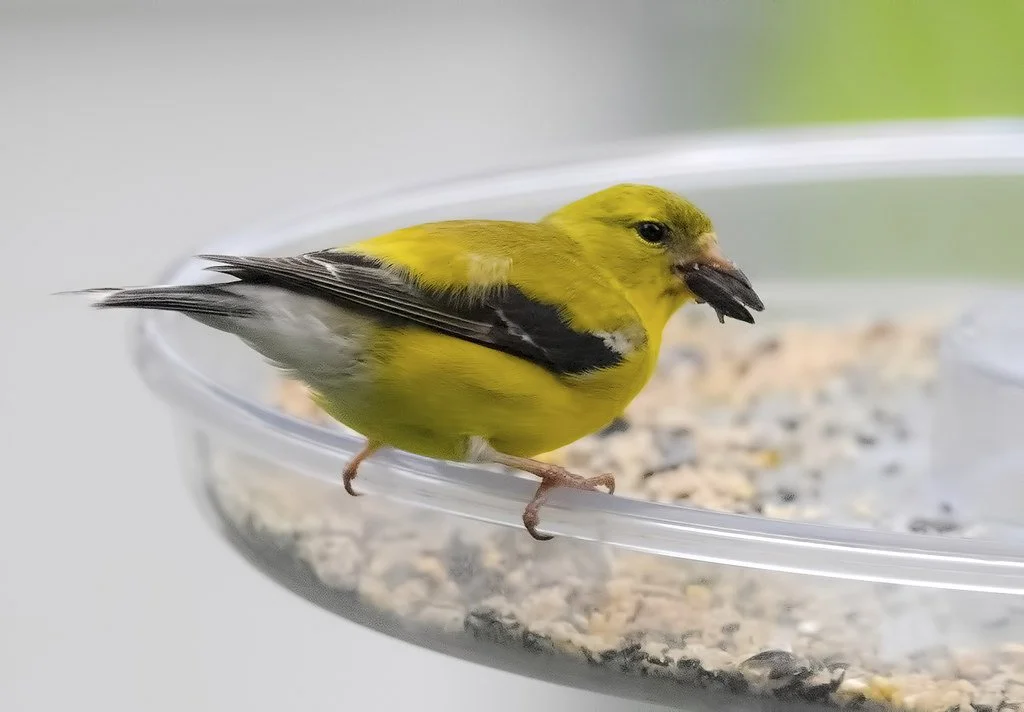





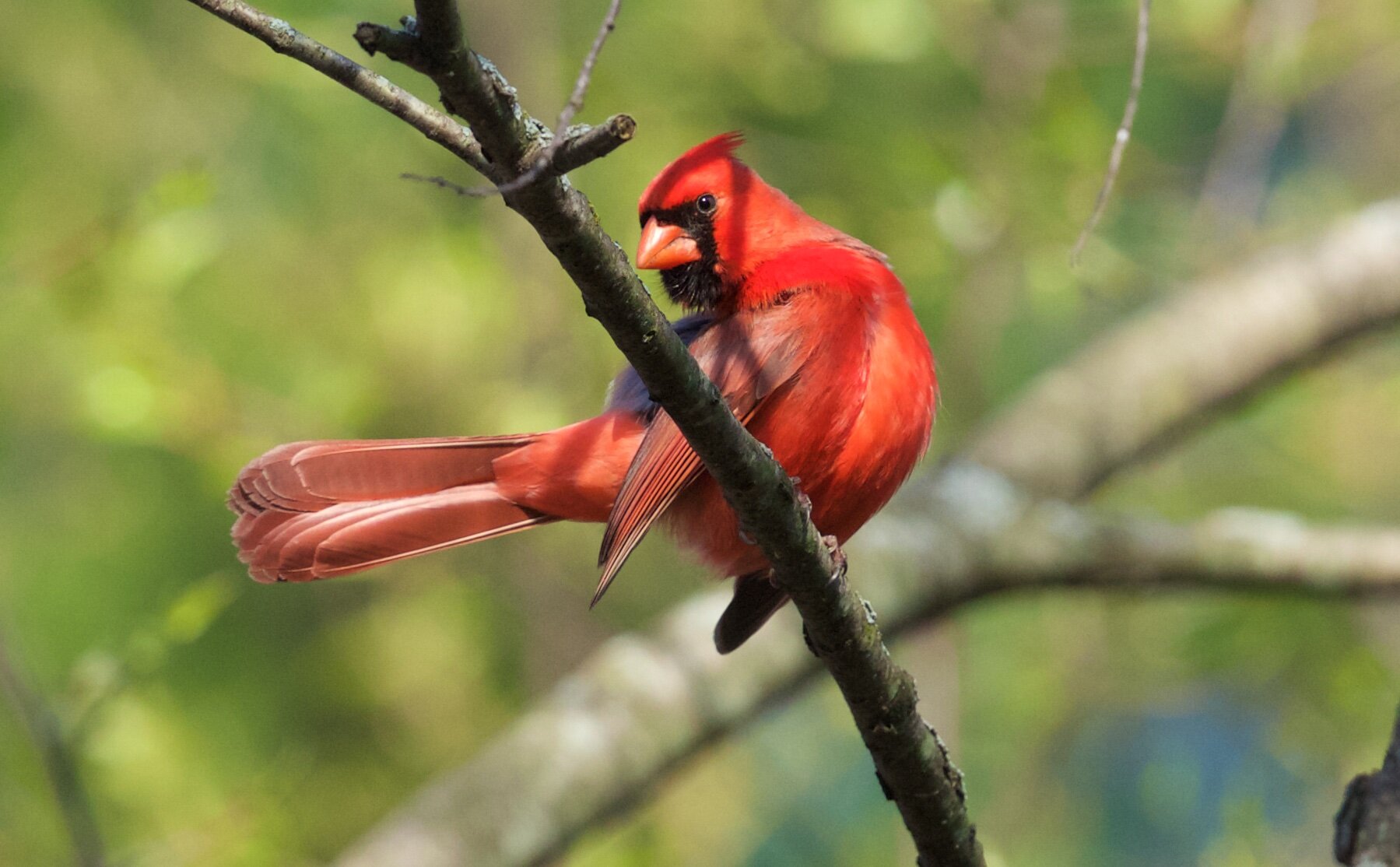





Early September is a fabulous time to listen for Chimney Swifts, as they are migrating in full force from the US (including Wisconsin) to the Amazon basin in South America. During this time, Chimney Swifts will form big flocks at sunset through dusk, swirling around in a tornado of birds above a big chimney. Eventually they drop in and cling to the inside of the chimney, where they sleep for the night. It’s an amazing sight to behold, and full of the most adorable Chimney Swift twittering noises you can imagine! It’s so fun to watch, events called Swift Night Out are held around the country, including in Wisconsin.
Photo by Brenna Marsicek/SoWBA